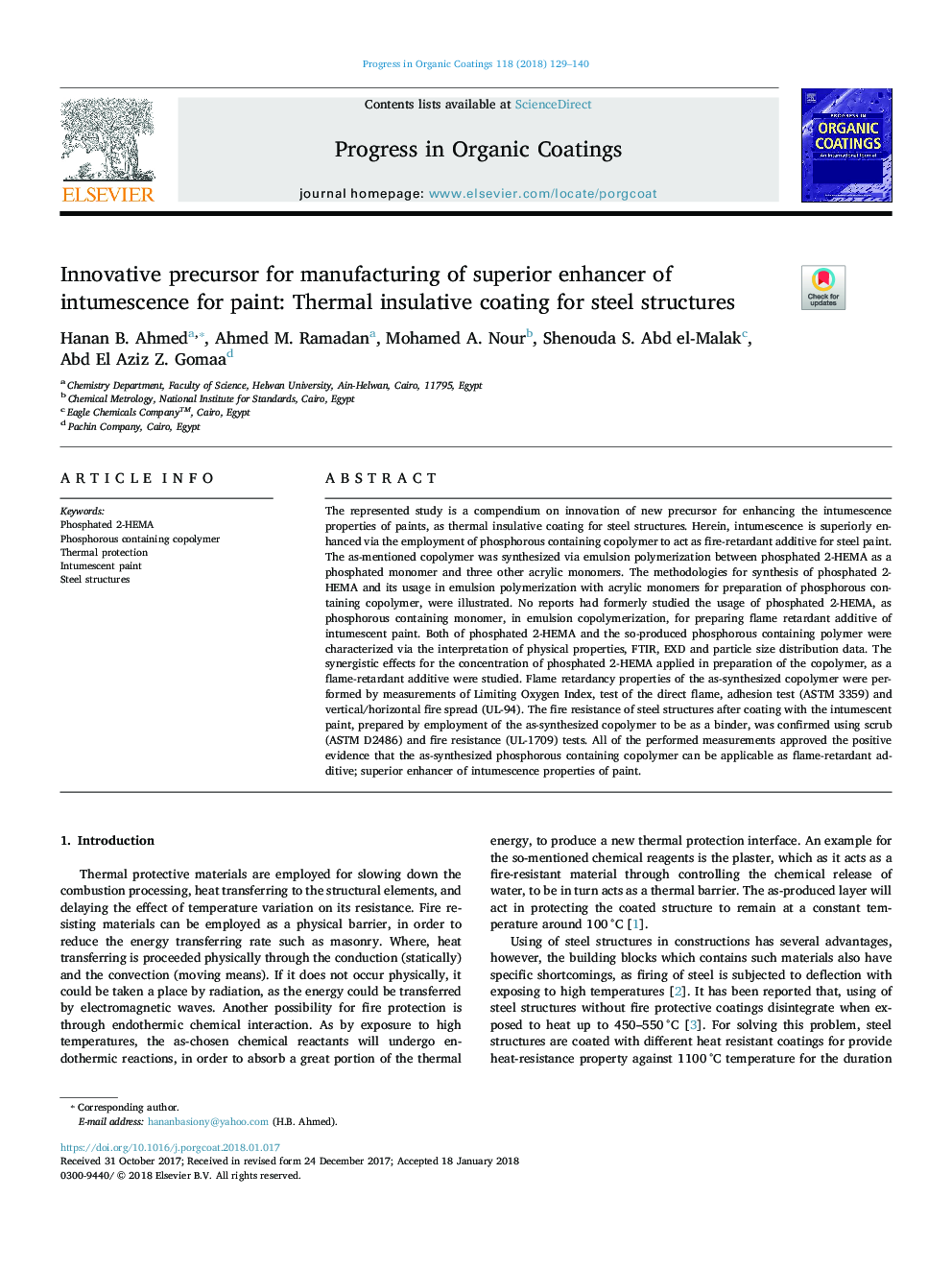| Article ID | Journal | Published Year | Pages | File Type |
|---|---|---|---|---|
| 7106023 | Progress in Organic Coatings | 2018 | 12 Pages |
Abstract
The represented study is a compendium on innovation of new precursor for enhancing the intumescence properties of paints, as thermal insulative coating for steel structures. Herein, intumescence is superiorly enhanced via the employment of phosphorous containing copolymer to act as fire-retardant additive for steel paint. The as-mentioned copolymer was synthesized via emulsion polymerization between phosphated 2-HEMA as a phosphated monomer and three other acrylic monomers. The methodologies for synthesis of phosphated 2-HEMA and its usage in emulsion polymerization with acrylic monomers for preparation of phosphorous containing copolymer, were illustrated. No reports had formerly studied the usage of phosphated 2-HEMA, as phosphorous containing monomer, in emulsion copolymerization, for preparing flame retardant additive of intumescent paint. Both of phosphated 2-HEMA and the so-produced phosphorous containing polymer were characterized via the interpretation of physical properties, FTIR, EXD and particle size distribution data. The synergistic effects for the concentration of phosphated 2-HEMA applied in preparation of the copolymer, as a flame-retardant additive were studied. Flame retardancy properties of the as-synthesized copolymer were performed by measurements of Limiting Oxygen Index, test of the direct flame, adhesion test (ASTM 3359) and vertical/horizontal fire spread (UL-94). The fire resistance of steel structures after coating with the intumescent paint, prepared by employment of the as-synthesized copolymer to be as a binder, was confirmed using scrub (ASTM D2486) and fire resistance (UL-1709) tests. All of the performed measurements approved the positive evidence that the as-synthesized phosphorous containing copolymer can be applicable as flame-retardant additive; superior enhancer of intumescence properties of paint.
Keywords
Related Topics
Physical Sciences and Engineering
Chemical Engineering
Process Chemistry and Technology
Authors
Hanan B. Ahmed, Ahmed M. Ramadan, Mohamed A. Nour, Shenouda S. Abd el-Malak, Abd El Aziz Z. Gomaa,
